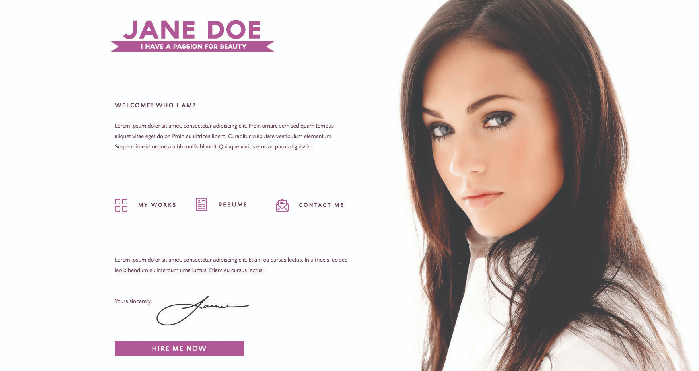
We have all been there. Sometimes we are trying to create an amazing personal online portfolio, but even after months we end up with the main page that says ‘under construction.’
We spent countless hours on Photoshop, working to make our portfolio look appealing by trying out a hundred different things. It’s not easy. As a designer, creating something personal will always be a challenging task.
It might not be the same way for everyone but for me, being my client is a tough job, and that is precisely why I want to share with you the tips and tricks on how you can make a better personal online portfolio.

Table of Contents
Why do we need a portfolio?
We need not rush into creating things, and blankly start using Photoshop. Yes, it sounds exciting, but this is not the point, to begin with. First, you need to consider yourself as a client as think about the requirements and goals just as you would do when working with any other client on any other project. Take a look at the following:
a) Is the selling of products your main aim?
b) Do you want a showcase for your products?
c) Should we get to know you first?
d) Is it to educate the audience?
These are just several examples, and it is not necessary to pick only one when you are deciding upon your goals to set up a personal online portfolio.
Generally, an excellent way to do this is to jot down all the goals that come in your mind and then give them a priority or value. For example, I would go with selling (0/4), showcasing (3/4), get to know (1/4) and audience (0/4). You can give values based on your way of thought to ease your first step in this game.
Yes, it might be surprising that I preferred display to sell. You might not think the same. It is your choice to make!
Wireframing:
I know where your mind is going at this moment. You have seen examples, and now all you can think about is going straight to the redesigning. Go for it but don’t reach out to Photoshop just yet.
First, you will need a little brainstorming on the overall layout of your online portfolio. Grab a pen and a paper and spent at least an hour designing for your collection. Just set a time frame and don’t stop if you think you are done in half of the time.
Just keep pushing. Nothing is undone or wrong at this stage. You see, at this point, it is just a sketch, not a complete wireframe. Create at least 20 designs.
The brainstorming session is now completed and its turn to do some filtering work and reach the wireframe. Now obviously, since this is entirely personal, I cannot produce a set of rules but still what I can do is indicate a few pointers that you can look at:
Make your wireframe clear and clean: First impressions count. Make sure it doesn’t get hard to explain what is going on. Think about it by picturing yourself as a visitor. Would you go back to a portfolio that does not catch your attention the first time? Not! The first impression should be inviting to your portfolio visitors.

Make the right choice when displaying: You are a designer, and you know that not everything is worth a display. You have done a numerous amount of excellent work. You don’t need to highlight everything you have done. Surely, you are a well-rounded designer but focus on your strengths than the overall experience. Make every entry count.
Make the products your focus: consider visiting the showroom. It is not the showroom that matters. It is, the cars. A personal online portfolio is like an art gallery. Unless your aim to display the brand identity, make sure your work gets more attention. So keep the design minimal.
Designing or Coding?
Yes, you guessed it! Time to start to digital work! Coding had to be mentioned with the design because not all designers know the coding part. However, if you do know how to code, do it and leave the Photoshop work.
Since you already created a wireframe for your personal online portfolio, its time to start coding it up to match the functionality of your design. It had happened to me before where I had a wireframe but still spent a lot of time on Photoshop and ended up with nothing.
This is the reason for recommending the design of the wireframe first. It gives you an image of the desired output and sets you on the track. As a result, I can code while I am editing in Photoshop. Thus, saving a lot of time!
Last but not least: Editing and Publishing:
You have accomplished the goals that you had aimed for, made the perfect design that makes your work the highlight, and you have completed designing your online portfolio. What are you waiting for then? Put up your work online! Go ahead and publish it as soon as possible.
When you have a beautiful and stable foundation, there is always a chance to edit it at a later stage to add more details to the design. Optimizing is good since it can be a bait to attract the visitors back to the portfolio at a later stage. You can go for catchy updates that bring your collection back in the visitors’ attention.
“Newest updates on project descriptions!”
“Now you can directly access my work by just pressing the icon!”
“What do you think about the latest updated scroll behavior?”
This is just like having a new house. Yes, the decoration is not completed yet but does this mean I will not invite guests to my home? Obviously not!
Good luck on creating your very own first personal online portfolio!